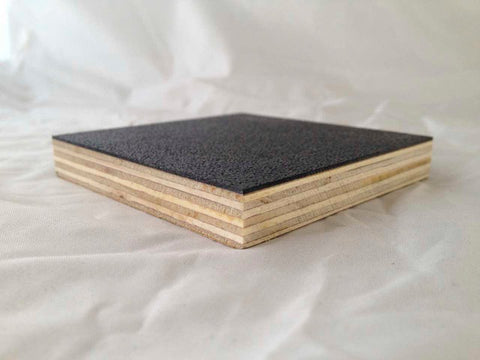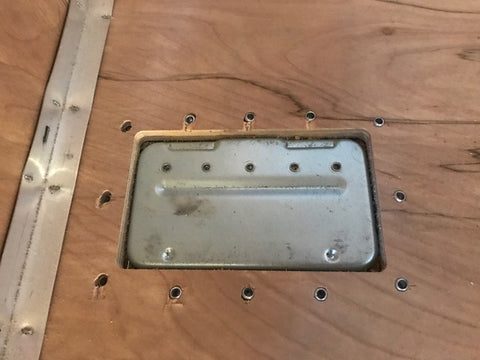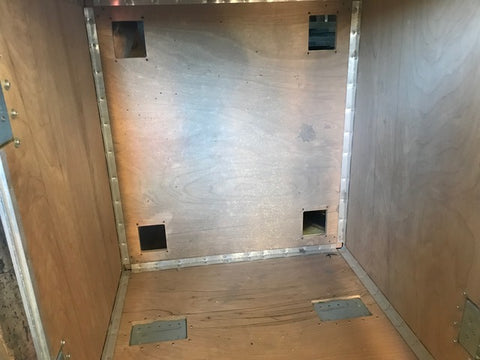What's the difference between Brady Cases and its competitors?
Posted on 15 January 2018
Many moons ago when Brady Cases was founded, our Owner Brady decided that he wouldn’t build a case using materials or techniques that he wouldn’t want on his own cases. Fast forward 10 years and we continue to build to that standard. Here at Brady Cases, we focus on building cases that we would want to own and while we embrace new technology and are always seeking to improve what we do, we don’t stray from that original ideal. Even though we never compete with anyone but ourselves, we often get asked how our cases size up compared to the competition. The answer is that here at Brady Cases, it’s a different world.
We use the best materials we can. We don’t cut corners or use cheap products. We use what is called double angle extrusion so that where the panels join together, they go into a channel in the aluminum and then we rivet through both legs of aluminum and sandwich the panel in between. That fastens it together securely and the aluminum extrusion makes up the frame of the case. Most companies will take the wood and either glue or use tiny nails to secure the wood together and then will use rivets or even staples to hold a single angle piece that merely covers the joints of the wood and strengthen it somewhat but it typically is more for covering up the joints of panel more than providing a framework for the case (see photos at the bottom for comparison of one of our cases and a competitors case).
Most companies don’t miter the aluminum at 45 degree angles in the corners the way we do - they just do straight cuts and there’s a big gap at the corner of the case and the ball corner merely covers it up. The corner is where you want the most solid construction.
We use high quality AC birch with ABS laminate finishes, with different finishes available. It’s solid, quality wood. All our rivets are either punched through aluminum or are washer backed - most companies will rivet handles, corners and latches without any washers and it’s easy to tear them off, especially with a lot of use or a few flights. We can go into quite a few more details but our cases are custom made here in the US with the best components and have proven themselves through trailers coming off and tumbling, vehicle flips (personal experience there!), cases toppling out of a trailer onto the highway, us running over them with large trucks to test them out, flooded warehouses keeping gear safe, and we’ve seen some of our early cases after 300-500 flights still doing their job and holding up well.
We use high quality polyethylene plank foam in the base (depending on the design of the case), so the equipment doesn’t squash or compress it but still extremely good protection, and then a softer 1” ester foam on all the sides and top. A lot of companies will use an ether foam which typically discolors after 2-3 years and then starts to disintegrate. We’ve re-foamed a good number of other name brand cases that cut corners on foam.
If your case is on casters, we use a ¾” piece of plywood on the bottom of the case that is the whole length of the case. The casters bolt through into the base with bolts and tee-nuts and makes for a stronger case. We use 4” casters that have a high weight-bearing load and every case with casters comes with 2 locking each that keep it from spinning or swiveling. Often, the cases can be heavy cases with lots of equipment on a steep ramp and merely locking one of the casters will keep the whole thing from rolling down the ramp – but it keeps your equipment from “walking away from you” when you need it to stay still, stay strategically packed in the trailer, etc.
We build all types of cases and we always take into consideration what our customers are using our cases for. We don’t classify our staff as only builders or admin. Brady Cases is home and family to musicians, designers, techies, gun enthusiasts, hobbyists, and military veterans. We pool that knowledge and life experience, add a little commonsense factor, and turn that into a well-designed, well-built case that does exactly what it is supposed to do. Our music equipment cases are a perfect example of this process. Some companies build cases where the lip of the base will come up too far and can block the speaker of an amp to mic it, or block connections on mixers or pedal boards due to poor design. We have specific depths we recess things into the foam that are standard but also look at all the equipment to make sure everything fits, everything is accessible and is plug & play. So much thought and time goes into our designs before it even goes out to the floor to be built.
As with anyone when it comes to something they love, we can talk for hours and give details upon details describing what we build and how we build it but we think this little anecdote describes our cases best:
A little over a year ago, our Owner, Brady, had a tire blow on his vehicle. He hit a curb, then a barrier, and then rolled multiple times side to side and end over end into a ditch. He had a combo amp, 2 amp heads, 3 guitars, pedal board, espresso machine case and a good number of other things and cases. He was relived to not see much damage on the cases and was super impressed when he literally opened the guitar cases, pulled the guitars out and they were perfectly in tune. He still uses those same cases and you can’t even tell they flipped, slammed together, and some busted through the windows ejecting out of the vehicle.
Welcome to our World!







Competitor case inside before foam!





0 comments